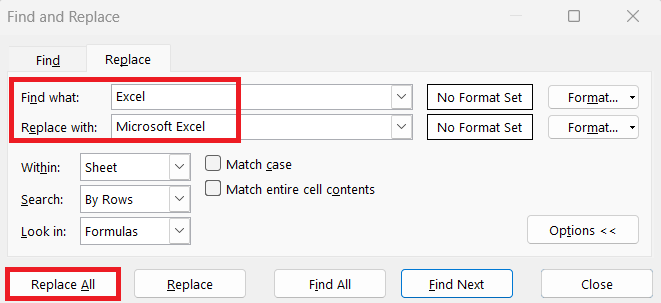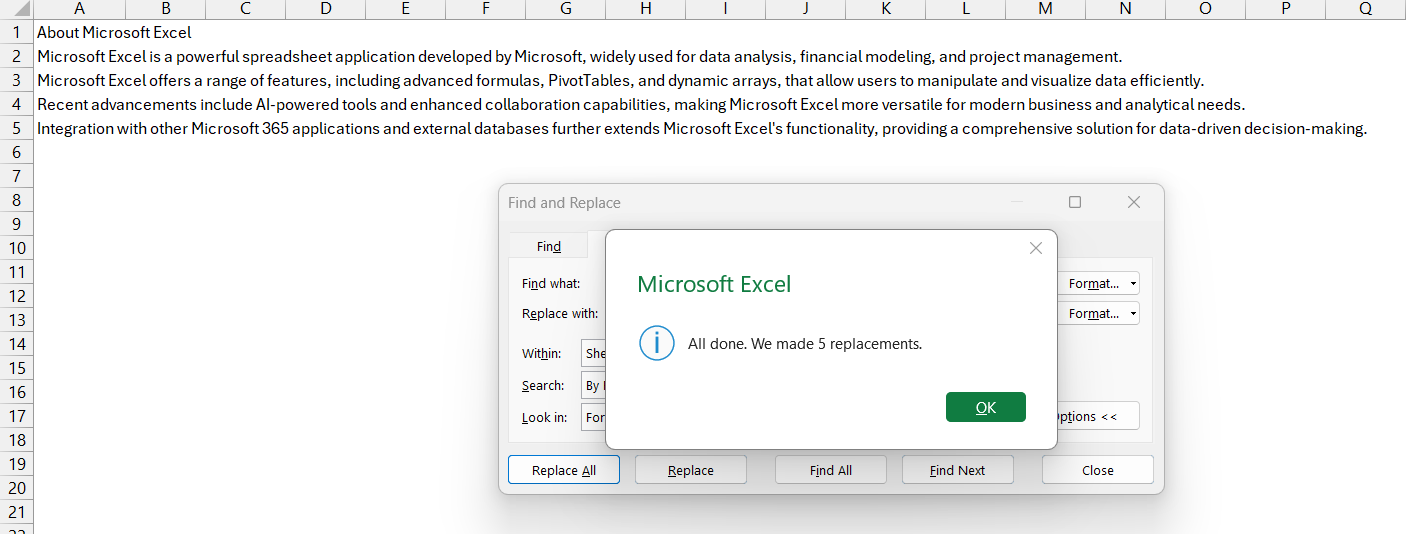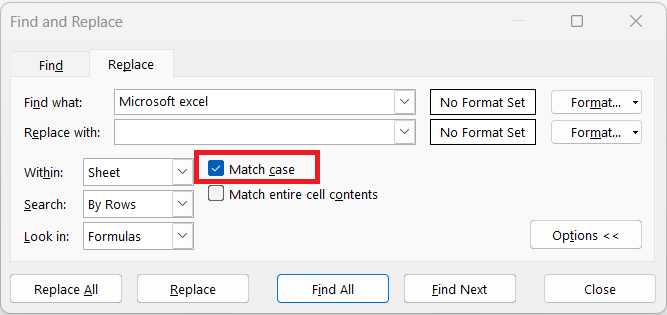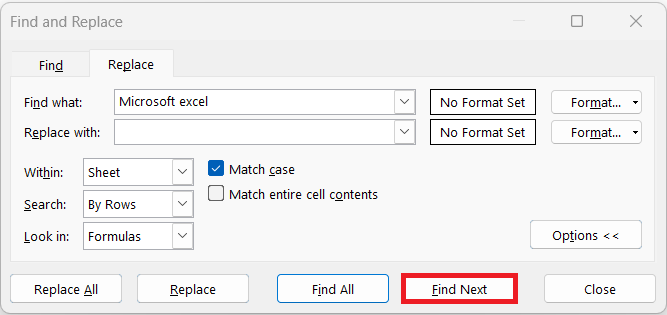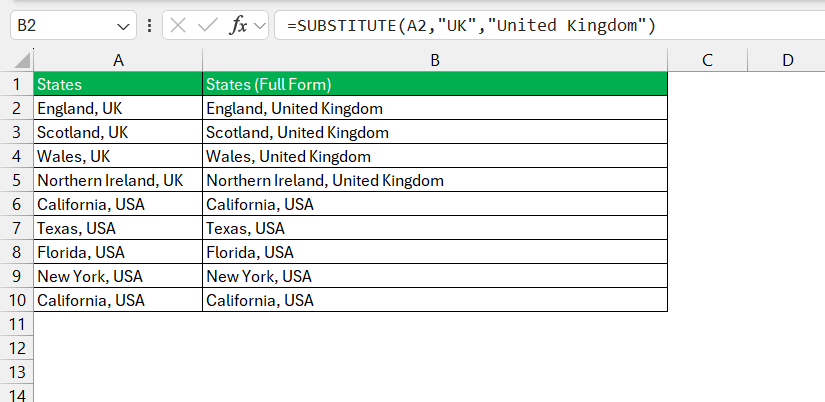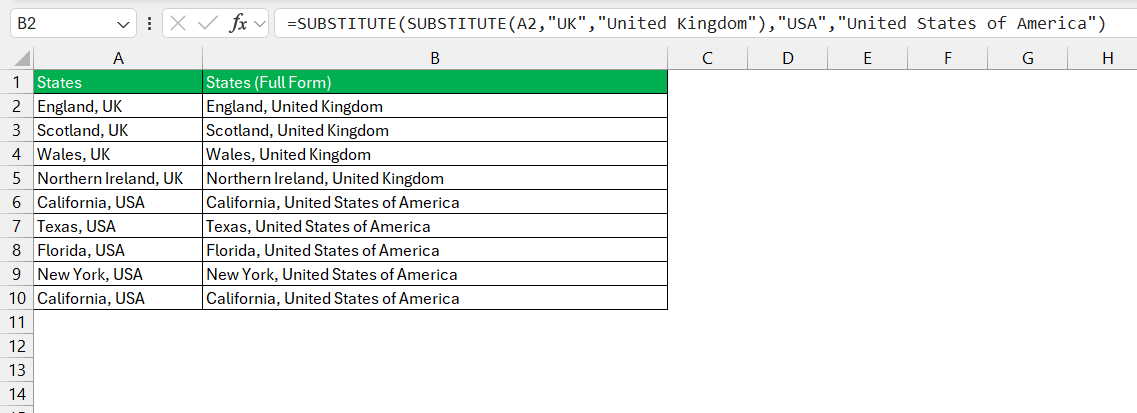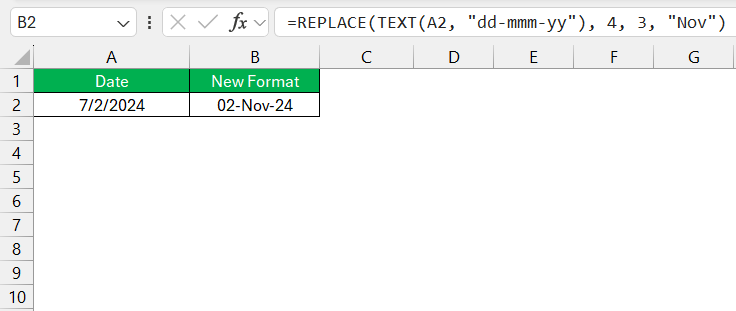To replace multiple values in Microsoft Excel, you can use the Find and Replace feature, which allows you to quickly update specific data across your spreadsheet. This tool is handy for replacing individual cells or multiple occurrences of a value within a selected range. By accessing it through the Home tab or using the keyboard shortcut Ctrl + H, you can specify the value you want to replace and enter the new value, ensuring efficient data management and accuracy in your Excel workbooks.
Key Takeaways:
- Efficiency Boost: Excel’s Find and Replace feature is a powerful tool for swiftly updating data across your spreadsheets, saving time and ensuring accuracy.
- Wildcard Magic: Utilize wildcards like asterisks (*) and question marks (?) to target specific patterns within your data, enhancing search precision.
- Scope Control: Narrow down your replacements to specific ranges or sheets within your workbook, preventing unintended changes elsewhere.
- Advanced Techniques: Explore nested SUBSTITUTE functions for complex replacements, and leverage functions like REPLACE for precise adjustments to dates and numbers.
- Real-World Applications: From cleaning data by standardizing formats to analyzing trends across multiple columns, mastering Find and Replace enhances data management and analysis capabilities in Excel.
Table of Contents
Unveiling the Excel Pro Hack for Replace Multiple Values
The Power of Excel’s Search Capabilities
Imagine sifting through your Excel workbooks with the speed of a pro data analyst. That’s the convenience and power Excel’s Find & Replace feature brings to the table. With just a few clicks, you can quickly locate and modify every instance of a particular piece of data, be it text or numbers.
Make sure you have your spreadsheets ready—because once you witness the impact of wildcards like question marks and asterisks, you’ll transform how you interact with data.
When to Use Find & Replace for Bulk Edits
Bulk edits are your go-to maneuver when you’re facing lists teeming with outdated information, such as price lists with old prices or directories with incorrect contact details. They save you hours, especially when you’re updating recurring text or figures across expansive datasets.
Find & Replace becomes a lifesaver during tight deadlines or when preparing data for meetings, reports, or pivoting into other analyses. It’s the moment when quality, speed, and accuracy in editing can coexist peacefully, and Excel’s Find & Replace feature is the peacemaker.
Mastering Excel’s Find & Replace Feature
Step-by-Step Guide to Using Find & Replace
Ready to harness the power of Find & Replace in Excel? Here’s a straightforward guide to get you started:
STEP 1: Open your workbook and jump to the “Home” tab. Then, in the editing group, locate “Find & Select” for a dropdown menu.
STEP 2: From the dropdown, choose “Replace…” and a dialog box will appear.
STEP 3: Now, it’s time to specify what you’re searching for. Type the value you want to be replaced in the “Find what” field. Enter your desired new value in the “Replace with” field. Click “Replace All.”
STEP 4: A dialog box pops up to confirm the number of replacements made. Click “OK” and you’re done!
Tips to Increase Efficiency with Find & Replace
To raise your Find & Replace game to new heights, consider these efficiency-boosting tips:
- Use Wildcards: Wildcards such as * (asterisk) for multiple characters, or ? (question mark) for a single character can pinpoint patterns rather than exact matches.
- Search within Particular Areas: Scope down your search to specified ranges or sheets to ensure you’re only changing what’s necessary.
- Replace in Formulas: You can also replace text within formulas. Just make sure you’re in Formula View before you start your replacement spree.
- Mind Case Sensitivity: Turn on the ‘Match case’ option if your replacements need to be case-specific.
- Preview Before Committing: Use ‘Find Next’ to preview the first instance before hitting ‘Replace All’ to avoid unintended changes.
Diving Deeper: Advanced Excel Find & Replace Techniques
Nesting SUBSTITUTE Functions for Complex Replacements
When you’re dealing with complex replacement tasks where each instance of a character must be swapped out for a corresponding unique character, nesting SUBSTITUTE functions is your secret weapon. This means you’re stacking multiple SUBSTITUTE functions within one another to make a sequence of replacements in a single cell.
Here’s a not-so-secret recipe for a classic nested SUBSTITUTE function:
- Write your first SUBSTITUTE function as usual, targeting the first value you wish to replace.
- Without skipping a beat, embed this within another SUBSTITUTE function, this time targeting the second value.
The final masterpiece will have multiple SUBSTITUTE functions wrapped within each other—efficient, elegant, and inevitably saving you a cascade of manual edits.
Utilizing REPLACE Function with Dates and Numbers
Using the REPLACE function for dates and numbers in Excel can sometimes make you scratch your head. You might have attempted to tweak a date directly and ended up with a quirky text string—as it turns out, Excel is actually treating that date as a whole different beast: a serial number.
For those date adjustments, wrap your mind around this: first, convert the date into text with the TEXT function, slipping it right into your REPLACE formula like this:
=REPLACE(TEXT(A2, "dd-mmm-yy"), 4, 3, "Nov")
Voilà, you’ve got the text string with the updated month!
Real-World Excel Scenarios: Applying Your New Skills
Cleaning Data: Reformatting Telephone Numbers and Addresses
Imagine a spreadsheet riddled with phone numbers in chaotic formats—parentheses here, dashes there, some without country codes. Before you know it, you’ve been tasked with the Herculean effort of tidying up this numeric mess. Excel’s built-in features, along with a dash of formula magic, can turn this data-cleaning task from daunting to do.
Here’s the plan:
- Use the SUBSTITUTE function to strip away unwelcome punctuation and spaces from telephone numbers, resulting in a consistent, digits-only string.
- Employ either custom formatting or the TEXT function to sprinkle in the dashes, periods, or parentheses exactly where they belong, giving you a polished, uniform look.
When it comes to addresses, similar approaches apply:
- Leverage Find & Replace to swiftly update street name abbreviations or correct common misspellings.
- Use text functions like LEFT, MID, and RIGHT to extract or reorganize components of addresses, such as separating street numbers from names, or even city from the state.
Remember, data cleaning isn’t just about aesthetics; it aids in data validation, ensures accurate analysis, and, most importantly, saves copious amounts of time down the road.
Analyzing Data: Searching and Replacing Across Multiple Columns
When your data spans across multiple columns, searching and replacing becomes slightly more complex – but fear not, Excel still has your back. Whether you’re dealing with product codes, names, or any other multi-column data, the key is to handle the task systematically:
- Optimize your workbook by ensuring all related data are on the same worksheet, making it easier for you to manage the find and replace function across all the relevant columns.
- Excel allows you to select multiple columns by holding the Ctrl key and clicking the column headers. Once selected, the Find & Replace function will work across all chosen columns at once.
- Master the art of using the ‘Find All’ feature before replacing, which allows you to review the instances found and decide if it’s safe to proceed with a mass replacement.
- Flex the power of filtering to your advantage. By setting up filters for particular values, you can segment your search and replace actions, which is especially handy for large datasets.
- Embrace consistency. Uniform data facilitates analysis, so ensure that your replacements align with established data standards.
By applying these strategies, you’ll not just replace values; you’ll elevate the quality and reliability of your data
FAQ Section
What is the Difference Between Excel REPLACE and SUBSTITUTE Functions?
The REPLACE function is ideal when you’re aware of the exact position of the text to be replaced within a string. It works by specifying the starting position and how many characters you need to swap out.
On the other hand, SUBSTITUTE comes into play when you are sure about the text to be replaced but not its position. It replaces specific text in a string and offers the flexibility to replace all instances or just a particular occurrence.
So, in essence, think of REPLACE for position-specific changes and SUBSTITUTE when dealing with content-specific replacements.
How Can I Replace Multiple Values in Excel without Overlapping?
To replace multiple values without overlap, use nested SUBSTITUTE functions or consider using a combination of functions like IF and SUBSTITUTE to manage replacements sequentially.
Can I Perform a Find & Replace Operation on Multiple Sheets at Once?
Excel doesn’t directly support Find & Replace across multiple sheets simultaneously. However, you can achieve this using VBA (Visual Basic for Applications) code to loop through each sheet and perform the operation.
Can you replace multiple values at once in Excel?
Yes, you can replace multiple values at once in Excel by using formulas that include multiple SUBSTITUTE functions, or by creating a macro for more complex, repetitive tasks. With the right approach, Excel can process numerous find and replace operations in one go, streamlining your data editing process.
How to use the Find & Replace feature in Excel?
To use the Find & Replace feature in Excel, press Ctrl + H to open the Find and Replace dialog box. Enter the text you want to find and the text to replace it with, and choose options like match case or match entire cell contents as needed.
John Michaloudis is a former accountant and finance analyst at General Electric, a Microsoft MVP since 2020, an Amazon #1 bestselling author of 4 Microsoft Excel books and teacher of Microsoft Excel & Office over at his flagship MyExcelOnline Academy Online Course.



